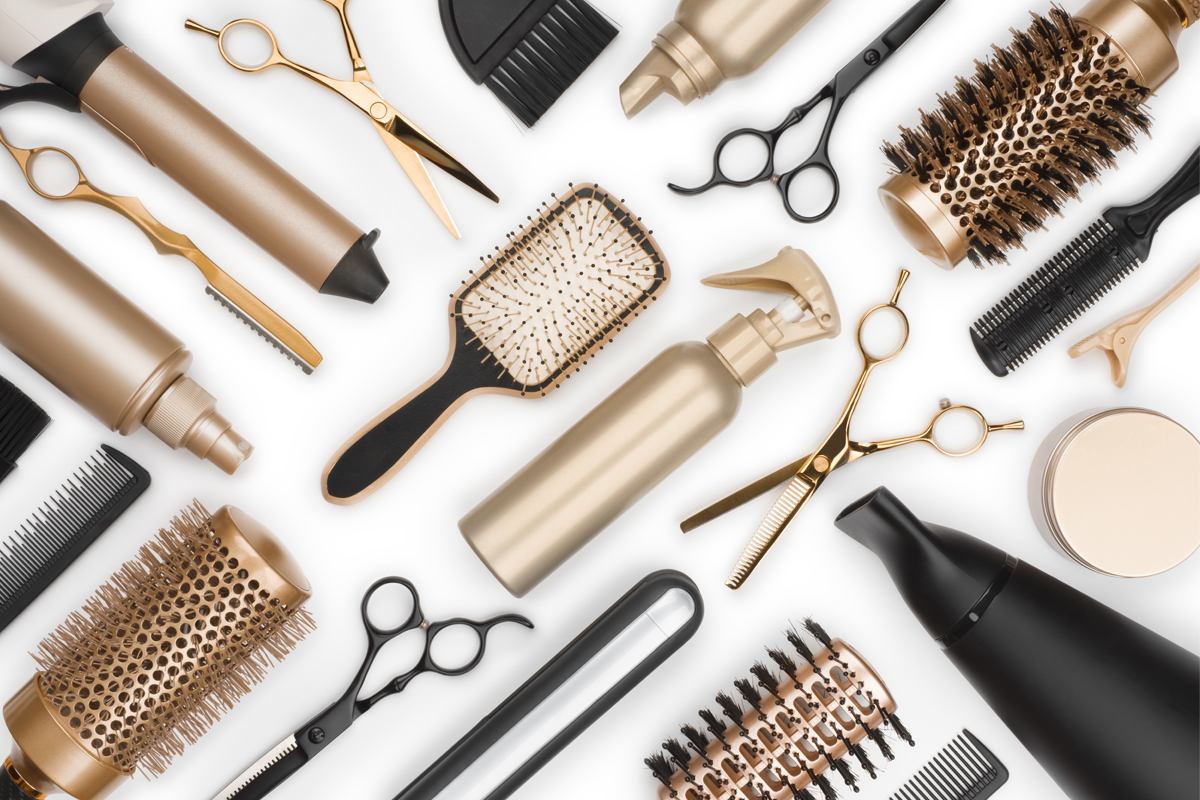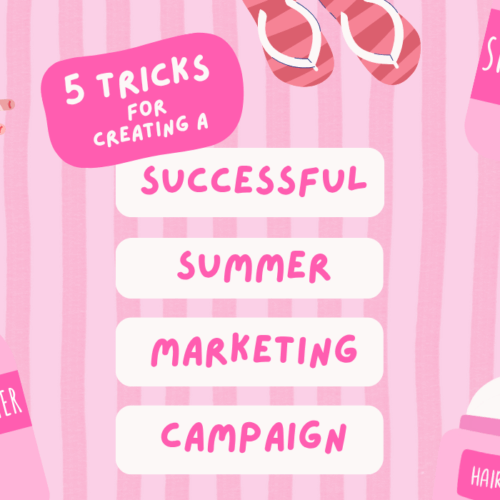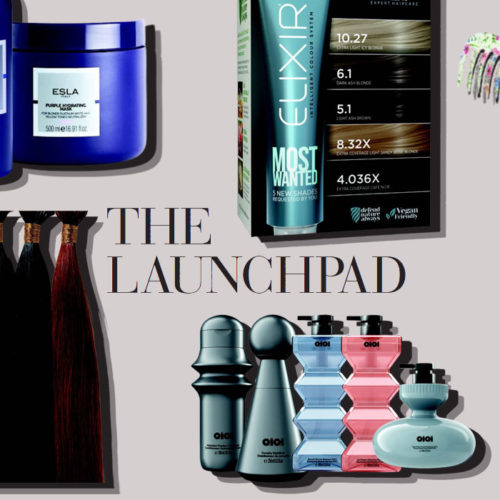The NHF/NBF will now be known under one name as the National Hair and Beauty Federation (NHBF)
– 2019 industry statistics show rocketing salon growth and strong survival rates
The new National Hair & Beauty Federation have published their 2019 industry statistics with the following key findings:
Sharp increase in number of hair and beauty businesses
Between 2014 and 2019 the number of hair and beauty businesses has shot up from 34,000 to 49,000, almost half as many again as there were in 2014. Working in an exclusive partnership with the Local Data Company, the latest NHBF figures are the first to break down hair and beauty businesses into categories:
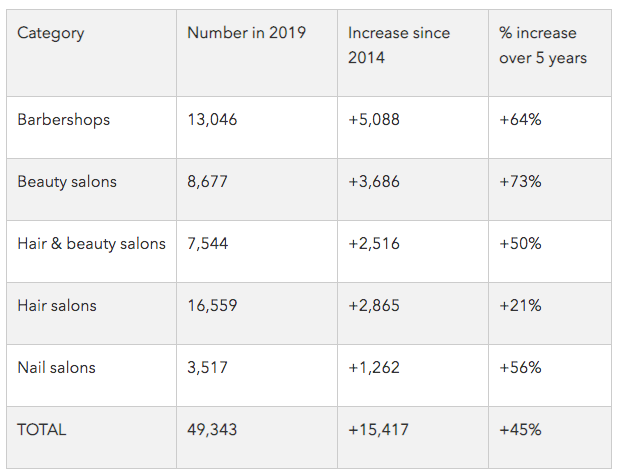
The growth was particularly strong for beauty salons and barbershops, with hair salons showing the least growth.
High survival rates
Survival rates after five years for hair and beauty businesses combined are 10% higher compared to the average survival rate across all sectors. Hair salons are particularly resilient, with more than three quarters making it past their first five years.
“These figures paint a picture of a thriving sector showing strong growth. Many clients no longer feel that looking and feeling good is a luxury – it’s become an essential they’re willing to spend money on.”
Beauty salons have a tougher time with only 60% surviving five years, which is slightly below the national average of 62%. Vacancy rates (unoccupied premises) for hair and beauty businesses are 6%, which is half the national average of 12%.
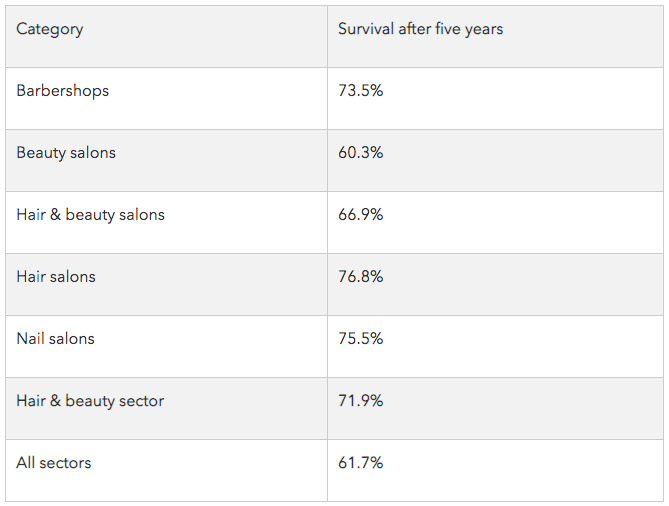
Hilary Hall, NHBF Chief Executive said, “These figures paint a picture of a thriving sector showing strong growth. Despite the growing competition, hair and beauty businesses also have survival rates well above the national average, probably due to the incredibly strong relationships built up with clients over time. Many clients no longer feel that looking and feeling good is a luxury – it’s become an essential they’re willing to spend money on.”
Drop in total number of people working in hair and beauty
Since 2015, the total number of people working in hair and beauty has dropped from 293,000 to just over 250,000. In the last year, the proportion of self-employed people working in hairdressing and barbering has gone down by 4% but has gone up by 4% in beauty. Full-time working has also increased by 3% in both hair and beauty compared to last year.
Slight growth in employment versus self-employment
NHBF President Ian Egerton said, “The number of people working in the industry overall has dropped, so salons are facing stronger competition to recruit qualified and experienced staff. It’s interesting that the number of employees in hairdressing and barbering has gone up by 4%, suggesting that some people prefer the security offered by employment compared to being self-employed.”
Apprenticeships in England fall
The number of apprenticeship starts in England continues to fall. In 2017/18 there were 11,500 hair apprenticeships (including standards and frameworks) but in 2018/19 the number dropped by just over 1,500 to 9,932.
Hilary Hall commented, “The number of apprentices on the more recent Trailblazer standards has not changed compared to last year, but the number on the old frameworks has dropped. Training providers have been put off moving onto standards as the frameworks are currently better funded and they are worried about the rigorous end-point assessments. The continuing fall in apprenticeship numbers is worrying as young people are the future of our industry.”
Credit to the NHBF – Visit their website for more https://www.nhf.info/home/

